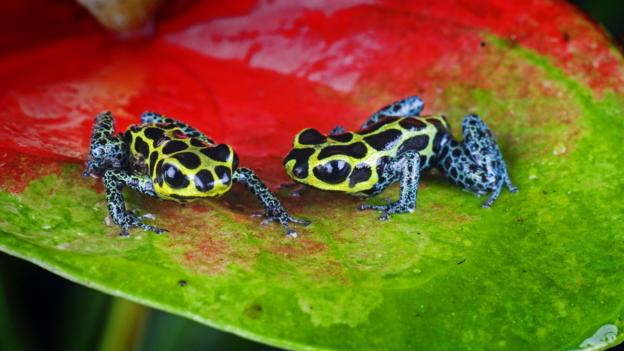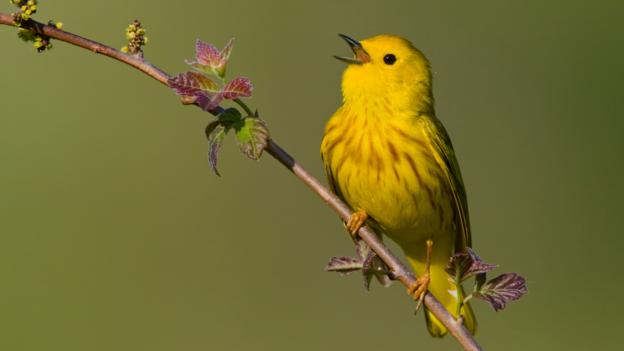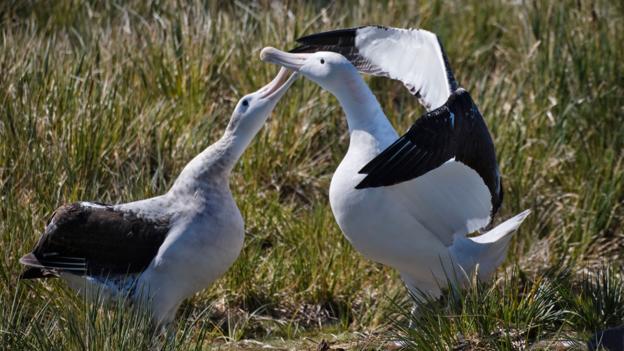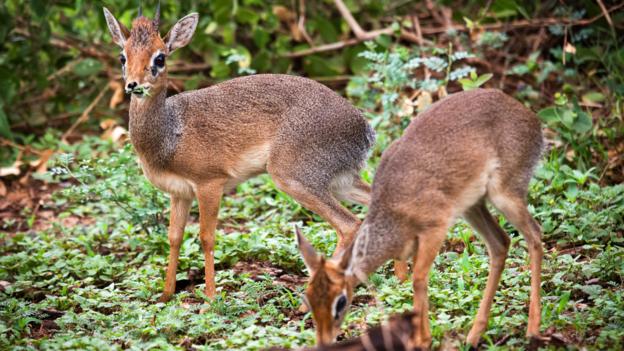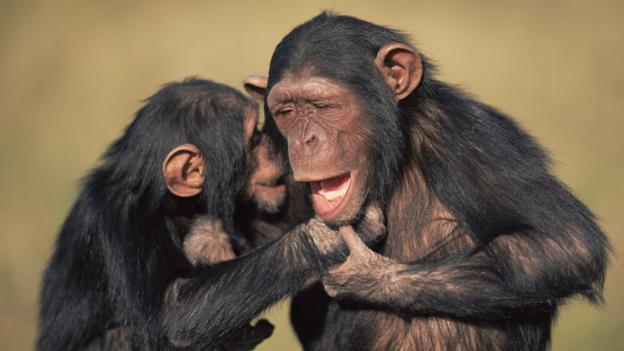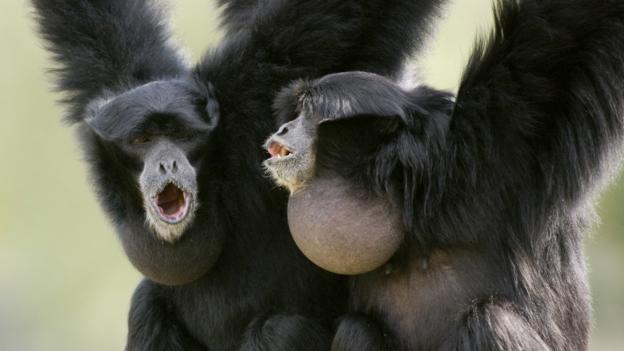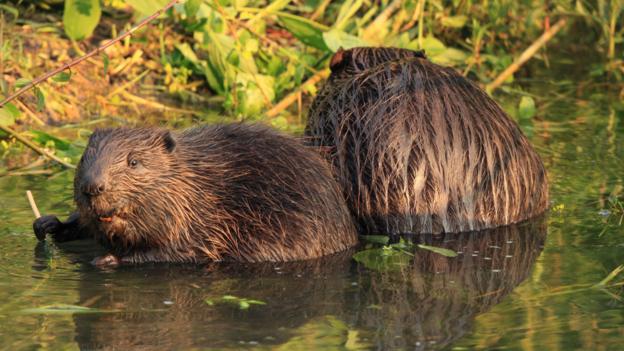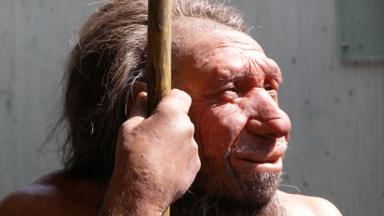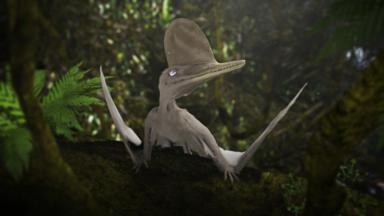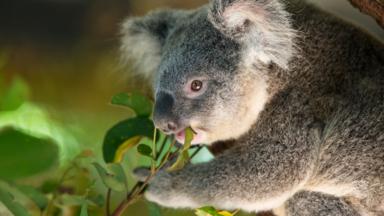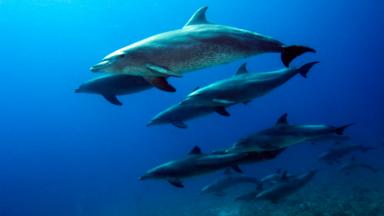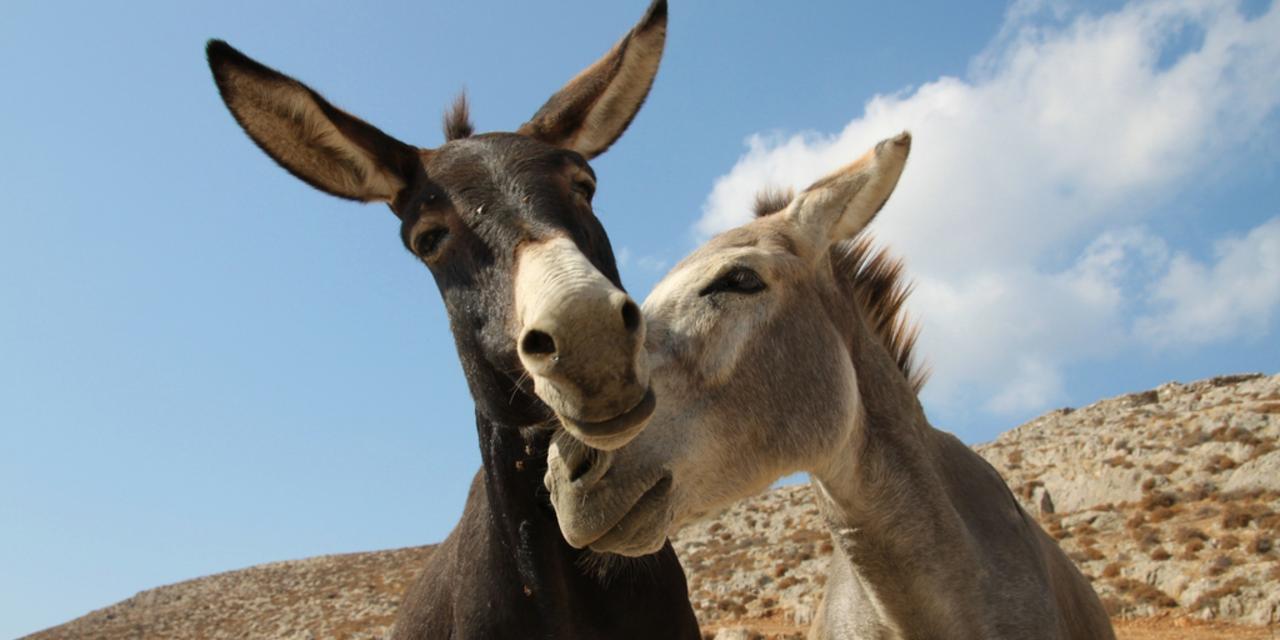
Many animals engage in long-term relationships, but a closer look reveals infidelity, illegitimate offspring and even infanticide – and humans may be no different
For many of us, marriage is special. The idea of a lifelong bond between two people is accorded legal, spiritual and cultural significance throughout much of the world. Whether we are religious or secular, a permanent monogamous relationship can feel sacred.
So when we hear about animals that form lifelong bonds, our "aww" factor goes into overdrive: "How adorable! Gosh, we could all learn a thing or two from those shingleback lizards".
But for all the romantic novels, love songs and soppy greetings cards, monogamy remains more of an ideal than a reality. Even in seemingly monogamous human societies, infidelity is common, and the same is generally true of monogamous animals. There are a few that do remain faithful, but the underlying reasons are anything but romantic.
Understanding why monogamy sometimes works for animals, and why it so often fails, can tell us about the nature of our own relationships. So cast aside your romantic ideals, and enter a world of amorous parasitic worms, adulterous songbirds and thoroughly naughty monkeys.
In nature, reproduction is everything. All creatures are ultimately trying to pass on their genes to their offspring. Monogamy is just one of many strategies, and there are two inescapable pressures that drive animals to mate more freely.
Monogamy is only a sensible strategy under very specific circumstances
The first point is that genetic variation is good. A female who mates with several different males will have more genetically diverse offspring, boosting the chances that at least some of them will thrive.
Secondly, as the English geneticistAngus John Bateman pointed out, there is a fundamental difference between males and females when it comes to making sex cells. Put simply, sperm are cheaper to produce than eggs.
This means a typical male animal has enough sperm at his disposal to fertilise countless females, whereas beyond a certain point females will not produce any more offspring by mating with extra males.
Put these two points together, and both sexes have incentives to find multiple mates. As a result, monogamy is only a sensible strategy under very specific circumstances, many of which will seem eerily familiar. The first is simply proximity.
If the members of a species live great distances apart, they will tend to take a "love the one you're with" attitude. They pair up with the first mate they can find, and stick with them.
"Staying together for the kids" can help ensure their progeny survive to adulthood
One animal that takes this to its logical conclusion is the intestinal parasite Schistosoma mansoni.
Reviled for causing schistosomiasis in humans, these worms live very intimate lives: males and females spend the entirety of their adult lives locked in a tight embrace. Each male has a "gynaecophoric canal" in which the female nestles while she churns out hundreds of eggs into the host's intestines.
The human digestive system is not the best place to pick up hot dates, so when a worm encounters a member of the opposite sex, it is quite willing to tie the knot for good.
The other key reason animals opt for monogamy has to do with good parenting.
The mimic poison frog was the first identified monogamous amphibian (Credit: Michael D./Naturepl.com)
If a species inhabits an environment that is fraught with danger and lacking in resources, their offspring are at great risk of dying young. In such situations, "staying together for the kids" can help ensure their progeny survive to adulthood.
For many species, reproduction consists of squirting out a few thousand eggs or sperm and hoping for the best
This was demonstrated in 2010 byKyle Summers and his colleagues at East Carolina University in Greenville, North Carolina, USA. They discovered the first known monogamous amphibian: the mimic poison frog.
The team was able to directly link this mating strategy to the fact thatthese frogs raise their tadpoles in tiny, nutrient-poor pools of water. Owing to their inhospitable nurseries, the tadpoles require the assistance of both parents to get enough food to reach adulthood.
"We were able to tie the evolution of monogamy and the evolution of biparental care to variation in a single ecological factor, and that's rare," says Summers.
But these monogamous animals are the exception. For many species, reproduction consists of squirting out a few thousand eggs or sperm and hoping for the best, so they could not be monogamous even if they wanted to.
If we want to learn something from nature, maybe we should look to the masters of monogamy: birds.
An estimated 90% of bird species are monogamous. At least, they are on paper. But bird love lives contain more drama than your average soap opera, with storylines involving jealous spouses, unfaithful partners and illegitimate children.
14-24% of albatross chicks are fathered by a male who is not their mother's life partner
There are two possible levels of monogamy. "Social monogamy" refers to a male and a female who are spatially close together, having sex, and cooperating in tasks like parenting. But it does not necessarily mean they are not sleeping around. Such exclusivity is called "sexual monogamy" and it is much rarer.
A cynic would say that many human relationships are social monogamy masquerading as sexual monogamy. In this respect, we have a lot in common with birds.
For a long time, scientists thought the bonds observed between bird couples during the breeding season meant that sexual monogamy was a given. But this turned out to be nave. Genetic and behavioural studies have revealed a world of avian scandal featuring cheating buntings and cuckolded warblers.
These misdemeanours are called, in delightfully euphemistic tones, "extra-pair copulations". They can account for up to 75% of the offspring in a population. Even birds known for their loyalty are prone to betrayal.
By definition, mammalian parenting is dominated by females, because they suckle their young with milk
Every other year, wandering albatrosses return from months at sea to rekindle their relationship with the same lifelong partner. But they are far from sexually monogamous. Genetic techniques suggest that 14-24% of albatross chicks are fathered by a male who is not their mother's life partner.
With such a high rate of infidelity, you might wonder why the birds stay together at all. The answer is the same as for the mimic poison frogs: parental responsibility. Baby birds are helpless lumps of skin and fluff, and they need two doting parents to ensure that they are well fed.
The albatrosses' lifelong partnerships are exceptional. In most bird species partnerships do not last much longer than a single breeding season.
But compared to the mammals, the group to which we belong, birds are paragons of monogamy.
Even birds known for their loyalty, like these wandering albatross, are known to 'cheat' (Credit: Keren Su/China Span /Alamy)
The reason for this is partly physiological. By definition, mammalian parenting is dominated by females, because they suckle their young with milk. This means that the division of labour seen in bird pairings simply cannot exist to the same degree.
Males will only accept monogamous pairings if they cannot dominate the females of their species
Nevertheless, around 3-5% of mammal species practise social monogamy, ranging from bats to wolves. These marital mammals limit their mating for many different reasons.
For example, beavers have to maintain their dams as well as caring for their offspring, so they benefit hugely from working together. However, the tiny dik-dik antelope does not share parental duties, but still pursues exclusive relationships. Needless to say, neither of thesespecies is beyond a spot of extra-pair copulation.
The dik-diks hint at an explanation for monogamy that is less than endearing.
In an ambitious study published in 2013, Tim Clutton-Brock and Dieter Lukas of the University of Cambridge in the UK analysed over 2,500 mammal species to find out why some of them have become monogamous. They concluded that males will only accept monogamous pairings if they cannot dominate the females of their species.
Only one factor appeared to actually precede the evolution of pair-bonds: infanticide by males
If females are widely dispersed, as with dik-diks – or indeedSchistosoma worms – then males will make the evolutionary transition from free-spirited bachelors to doting husbands. This helps them ensure success with at least one member of the opposite sex.
Among one group of mammals, social monogamy is more common. Around 27% of primates– the group that includes monkeys, apes and humans – practice social monogamy.
To find out why, a team led by Kit Opie of University College London in the UK studied all primate species, from hairy-eared dwarf lemurs to chimpanzees. They noted each species' preferred mating systems, as well as many other behaviours.
Then they mapped all the known traits onto an evolutionary tree. This allowed them to figure out when different behaviours arose over the course of primate evolution. Their results, released at the same time as Clutton-Brock and Lukas's, are rather shocking.
Shared parental care and wide female ranges did both correlate strongly with monogamy, suggesting they were linked. But only one factor appeared to actually precede the evolution of pair-bonds: infanticide by males.
It is quite common in some species for males to kill offspring that do not belong to them. This strategy may strike us as unpleasant, but it eliminates the children of rival males and prepares females for another bout of mating.
Gorillas live in polygynous groups in which several females are dominated by a single male
Now consider the position of a male whose offspring are not yet grown up. Such males might well form pair-bonds with females, if that is what it takes to prevent the murder of their offspring.
"Our analyses clearly show that infanticide is the trigger for monogamy in primates," Opie says assuredly.
He goes on to suggest that the risk of infanticide may be the basis for our own fondness for partnering up. This may be true, but it clearly has not gone as far as it might, because humans are far from strictly monogamous. Quite apart from promiscuous individuals, there are plenty of societies for which monogamy is not the norm – some estimates place the figure as high as 83%.
This suggests that the value we place on monogamy is more cultural than biological. The "natural" state of human relationships may be quite different. Once again, our evolutionary cousins offer clues.
Gibbons stay together for life making them far more monogamous than humans (Credit: Andrew Walmsle/Naturepl.com)
Apes are our closest living relatives. There are only a handful of species, but they show great diversity in their mating systems.
Gibbons are monogamous, pairing for life barring the occasional infidelity. Chimpanzees live in multi-male and multi-female communities, promiscuously mating with each other. Gorillas live in polygynous groups in which several females are dominated by a single male.
If the male has a regular, exclusive mate, he has no need for large testicles
These differences are reflected in the bodies of males and females. In some species, males and females look quite different: they are "sexually dimorphic". For example, males may grow huge appendages such as the antlers of a moose.
The more sexually dimorphic a species is, the less likely it is to be monogamous. If males must compete to mate with multiple females, this can drive them to grow to great sizes or develop ridiculous appendages. If each male tends to settle for a single female, competition is less intense.
This explains why gibbons, which pair-bond, show very little sexual dimorphism. Gorillas show a lot: silverback males are huge compared to females. Humans fall somewhere in the middle, not far from chimpanzees.
Similar clues can be found in the males' testicles.
Genetic evidence reveals that European beavers are faithful to each other (Credit: Blickwinkel/Alamy)
If males often find themselves mating with females who have recently mated with another, they tend to grow large testicles. This allows them to produce lots of ejaculate to wash away the sperm of other males. If the male has a regular, exclusive mate, he has no need for large testicles.
In the animal kingdom, monogamy in the strictest sense of sexual exclusivity is largely a myth
Chimpanzees tend not to have exclusive mates, and are massively well endowed in the testicle department. Gorillas and gibbons are spectacularly un-endowed. Again, we fall somewhere in the middle.
This, combined with our sexual dimorphism, has led some scientists to suggest that our original mating strategy was more like that of promiscuous chimpanzees, or even the "free love" mating practices observed in bonobos, and less like monogamous gibbons.
So where does this leave the human desire for life-long exclusive relationships?
In the animal kingdom, monogamy in the strictest sense of sexual exclusivity is largely a myth. Where it does occur, the factors underpinning it are either coldly pragmatic, or bloodcurdling.
There are plenty of societies for which monogamy is not the norm
However, this does not tell us anything about how the animals involved actually feel about each other. The ultimate evolutionary reason for pair-bonding might be the avoidance of infanticide, but the animals involved may well not be thinking about that. For all we know, they are experiencing an emotion akin to love, if they have some level of consciousness.
Perhaps it is also true that humans are not naturally monogamous. But if there is one thing that makes us human, it is that we try to act against our instincts when it seems like a good idea.
There are plenty of excellent reasons to give monogamy a go. Just because the bonds you cherish are ultimately nothing more that the product of unfeeling evolutionary processes, that does not make them less real.
Unmissable Stories
-

The lake that reveals humanity's birth
-

Atlantis myths that are really true
-

The 12 most beautiful equations
-
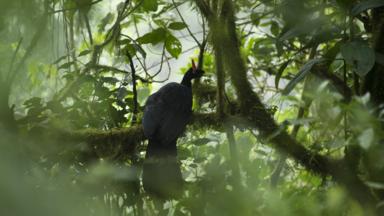
The most magical place on Earth
 Medicine, Psychology and Physiology
Medicine, Psychology and Physiology

